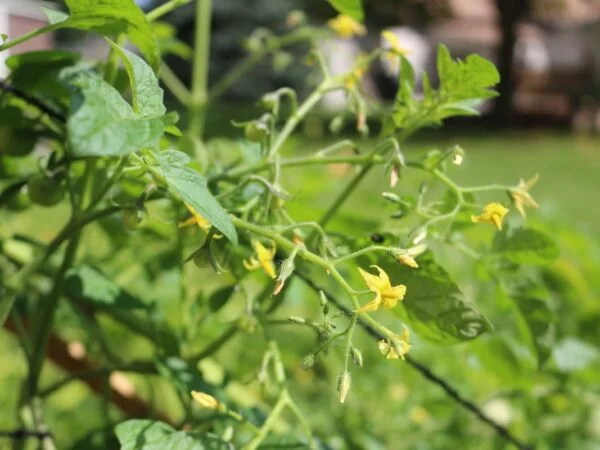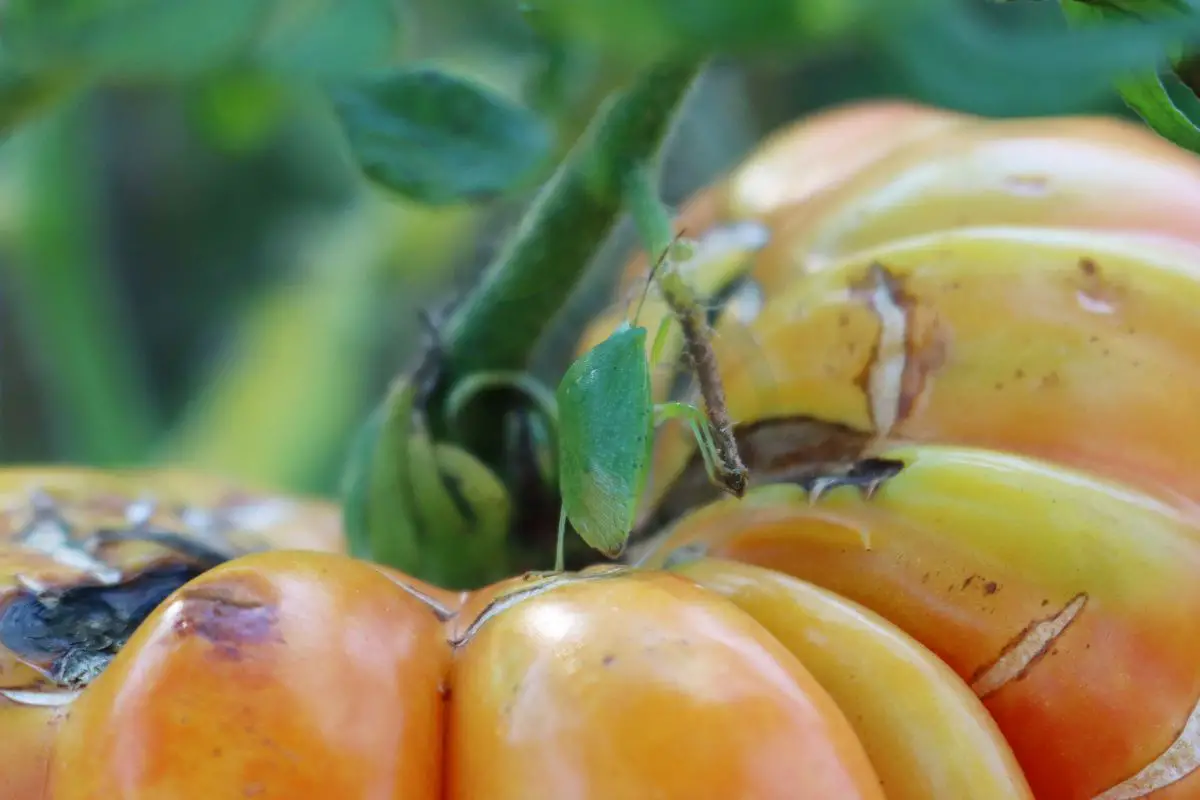
Did you know that green bugs infesting tomato plants can decimate an entire crop in a matter of days? These pesky stink bugs not only harm the plants but also pose a threat to your harvest, leading to significant losses.
If you're battling with green bugs on your precious tomato plants' foliage, fret not! In this comprehensive guide, we will delve into effective strategies to identify, manage, and eradicate these troublesome pests like stink bugs. From natural remedies to preventive measures, we've got you covered with expert advice and practical tips to safeguard your tomato plants from these voracious stink bugs and protect your green fruit.
Key Takeaways
- Identify Tomato Pests: Learn to recognize common tomato pests like aphids, spider mites, tomato hornworms, and leafminers to take timely action.
- Organic Pest Control: Implement organic solutions such as neem oil spray or introducing beneficial insects to combat green bugs effectively.
- Prevent Future Infestations: Adopt preventive measures like planting companion plants, using row covers, and practicing crop rotation to deter pests from attacking tomato plants.
- Take Prompt Action: Address pest infestations promptly to protect the health and yield of your tomato plants.
- Monitor Plant Health: Regularly inspect your tomato plants for signs of pest damage to catch infestations early and prevent extensive harm.
- Sustainable Gardening: Embrace sustainable gardening practices that prioritize natural pest control methods to maintain a healthy garden ecosystem.
Recognizing Tomato Pests
Identifying Features
Look for the distinct white, stippled discoloration on tomato leaves caused by spider mites. Identify tomato hornworms by their large size, green color, and white stripes. Recognize leaf-footed bugs by their piercing mouthparts and yellow spots on tomato fruit.
Damage Signs
Notice discoloration, wilting, and stunted growth as signs of spider mite infestation. Look for defoliation and fruit damage as indicators of tomato hornworm presence. Identify yellow spots, discoloration, and fruit drop as damage signs from leaf-footed bugs.
Pest Lifecycle
Understand that spider mites thrive in hot, dry weather and on stressed plants. Learn that tomato hornworms are large green caterpillars with a horn-like protrusion. Know that leaf-footed bugs have piercing mouthparts and feed on tomato fruit.
Top 5 Tomato Pests
Green Bugs
Green bugs, such as aphids and leafhoppers, are common pests that can wreak havoc on tomato plants. These insects feed on plant sap, causing yellowing leaves and stunted growth. To combat green bugs, introduce natural predators like ladybugs or use insecticidal soap.
Spider Mites
Spider mites are tiny arachnids that suck sap from tomato plants, leaving behind stippled leaves. To detect spider mites, tap tomato leaves over a white sheet to spot tiny specks moving around. Combat infestations by regularly spraying with water to increase humidity levels and using organic sprays like neem oil.
Tomato Hornworms
Tomato hornworms are large caterpillars with a voracious appetite for tomato foliage. Handpick these pests early in the morning or late in the evening when they are most active. Alternatively, apply Bt (Bacillus thuringiensis) to eliminate them without harming beneficial insects.
Aphids
Aphids are small, pear-shaped insects that reproduce rapidly and can transmit diseases to tomato plants. Control aphid populations by introducing natural enemies like parasitic wasps or using insecticidal soap. Regularly inspect the undersides of leaves for clusters of aphids and remove them promptly.
Leafminers
Leafminers are tiny larvae that tunnel through tomato leaves, leaving distinctive serpentine trails behind. To prevent leafminer damage, remove affected leaves promptly and destroy them to halt the spread of infestations. Consider using sticky traps to monitor adult leafminer activity in your garden.
Tomatoes and Aphids
Damage Impact
Pest infestations on tomato plants can severely impact plant health, hindering growth and reducing fruit production. The economic consequences of pest damage can lead to significant losses for tomato crops.
Understanding how pests such as aphids feed on tomato plants helps in realizing the extent of damage they cause. These pests not only suck sap from the plants but also transmit diseases, further compromising plant health.
Lifecycle
Common pests like spider mites, tomato hornworms, and leaf-footed bugs go through distinct stages of development that directly affect tomato plants. By recognizing these lifecycles, gardeners can anticipate and effectively address pest issues.
Spider mites start as eggs and progress through nymph and adult stages, causing visible damage by piercing plant cells to feed. Tomato hornworms transform from eggs to larvae, voraciously consuming foliage before turning into pupae. Leaf-footed bugs undergo egg, nymph, and adult phases, posing threats at each stage.
Control Strategies
To combat spider mites, utilizing preventive measures such as spraying with water or insecticidal soap can help control their population growth effectively. Handpicking tomato hornworms off plants or using Bt spray containing Bacillus thuringiensis proves beneficial in managing these pests.
Implementing strategies like brushing leaf-footed bugs into soapy water or employing natural remedies such as Neem oil or pyrethrin sprays aids in controlling their spread within the garden environment. By incorporating these methods, gardeners can maintain healthy tomato plants free from harmful pest infestations.
Tomatoes and Spider Mites
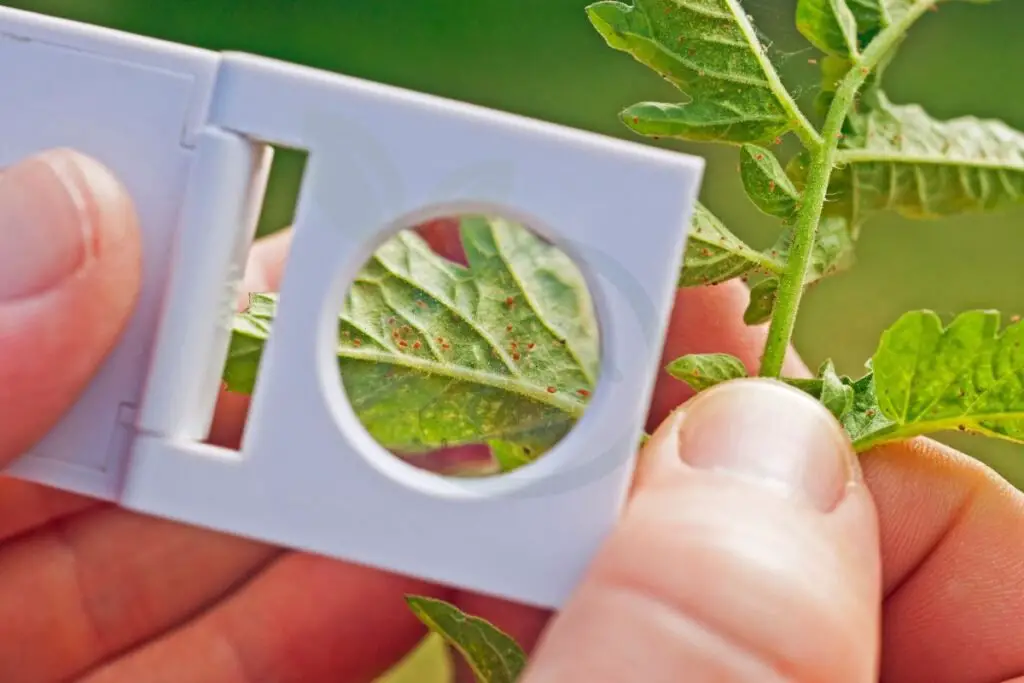
Recognizing Infestation
Spot pest infestations by observing discoloration, wilting, and stunted growth in tomato plants. Identify spider mites by thumping leaves over a white sheet. Look for signs of tomato hornworms, such as frass on leaves and sightings of hummingbird moths.
Damage Caused
Understand the specific damage caused by spider mites, tomato hornworms, and leaf-footed bugs to tomato plants. Learn about the impact of pest feeding on tomato leaves, fruit, and overall plant health. Recognize signs of damage caused by each type of pest infestation.
Elimination Methods
Explore effective methods to eliminate spider mites, tomato hornworms, and leaf-footed bugs from tomato plants. Early detection is crucial for successful pest elimination. Spray with insecticidal soap, Neem oil, and pyrethrin for efficient pest control.
Tomatoes and Tomato Hornworms
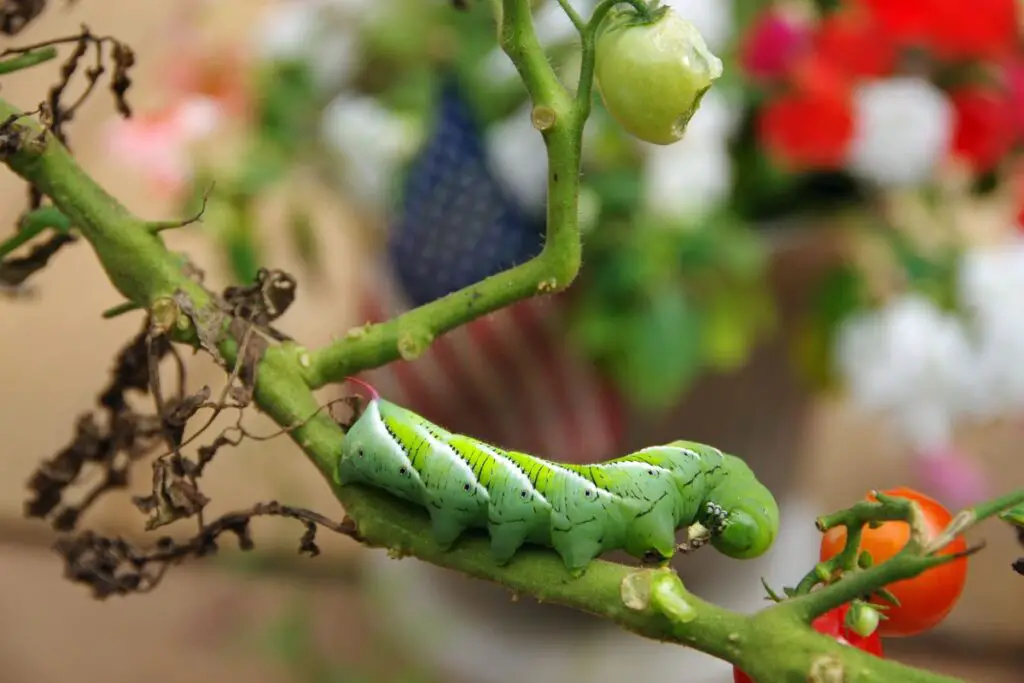
Identifying Hornworms
Recognize tomato hornworms by their large size, green color, and distinct white stripes for easy identification. These pests also feature a horn-like protrusion on their rear end. Understanding the significance of these pests is crucial as they can defoliate tomato plants and damage the fruits significantly.
Preventive Measures
To prevent tomato hornworm infestations, maintain healthy, well-fed, and properly watered tomato plants. Early detection and control are vital in preventing extensive damage caused by these pests. Natural methods like attracting beneficial insects can also help deter pest infestations effectively.
- Implement preventive measures:
- Maintain healthy tomato plants.
- Ensure proper feeding and watering.
- Importance of early detection:
- Crucial for preventing extensive damage.
- Natural methods:
- Attracting beneficial insects for pest control.
Natural Predators
Understanding the role of natural predators is essential in controlling pest populations that affect tomato plants. Beneficial insects prey on common tomato plant pests such as spider mites and aphids. Attracting these natural predators helps maintain a balanced ecosystem in your garden.
- Role of natural predators:
- Control pest populations effectively.
- Beneficial insects:
- Prey on common tomato plant pests.
- Benefits of attracting natural predators:
- Maintaining a balanced ecosystem in the garden.
Tomatoes and Leafminers
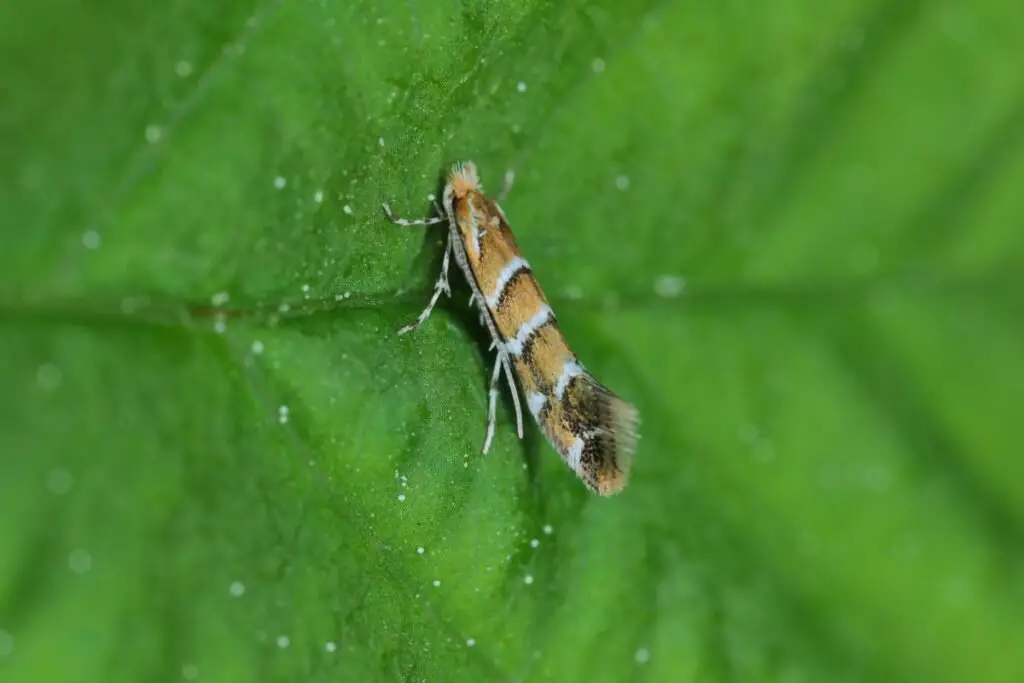
Spotting Leafminers
Leafminers can be identified by the visible trails they create on tomato leaves, indicating their presence. The damage caused by leafminers to tomato plants is characterized by these distinctive trails. Early detection is crucial in effectively managing leafminer infestations.
Lifecycle Insights
Understanding the lifecycles of common pests that affect tomato plants, such as spider mites, tomato hornworms, and leaf-footed bugs, is essential. Familiarize yourself with the developmental stages of these pests to inform control strategies for effective pest management. Knowledge of pest lifecycles plays a vital role in implementing successful pest control measures.
Management Techniques
Various management techniques are available for controlling pest infestations on tomato plants. Integrated pest management approaches combine cultural, biological, and chemical methods to combat pests effectively. Regular monitoring and timely intervention are key components of successful pest management strategies.
Effective Pest Control Methods
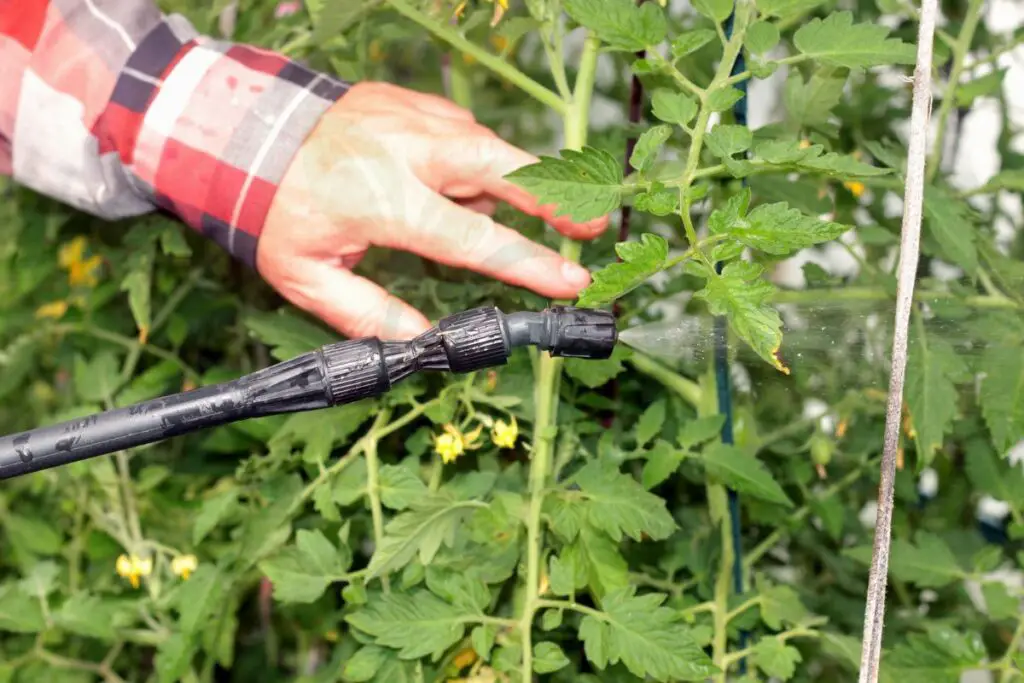
Biological Solutions
Biological control methods for green bugs on tomato plants involve using beneficial insects and natural predators. These allies help manage common pests naturally. By introducing ladybugs or lacewings, you can reduce pest populations without harming the environment. These methods are sustainable and eco-friendly.
- Beneficial insects like ladybugs and lacewings prey on harmful pests.
- Natural predators create a balanced ecosystem in your garden.
- Biological control methods promote long-term pest management without chemical intervention.
Chemical treatments such as Neem oil and insecticidal soaps play a crucial role in controlling pest infestations on tomato plants. Neem oil disrupts the life cycle of pests, while insecticidal soaps suffocate them. When used correctly, these treatments effectively combat green bugs and other pests.
- Neem oil is derived from the neem tree and acts as a natural pesticide.
- Insecticidal soaps break down the outer shell of insects, leading to dehydration.
- Proper application techniques ensure maximum effectiveness while minimizing risks to plants.
Cultural Practices
Cultural practices like crop rotation and companion planting are essential for preventing pest infestations on tomato plants. Rotating crops disrupts pest cycles, reducing their impact on tomatoes. Companion planting involves growing different plants together to deter pests naturally.
- Crop rotation helps break pest lifecycles by changing planting locations annually.
- Maintaining soil health through composting reduces susceptibility to pests.
- Proper plant spacing prevents overcrowding, which can attract pests like green bugs.
Organic Solutions for Green Bugs
Neem Oil Application
Neem oil serves as a natural remedy for controlling pest infestations on tomato plants. Its application effectively repels and disrupts the lifecycle of common pests. Using Neem oil presents benefits such as being an eco-friendly alternative to chemical pesticides.
Beneficial insects, like ladybugs and lacewings, play a crucial role in controlling pest populations on tomato plants. By attracting these insects, you can maintain a natural balance in the garden ecosystem. Understanding the significance of beneficial insects can greatly aid in sustainable pest management.
Insecticidal Soaps
Insecticidal soaps are instrumental in controlling pest infestations on tomato plants by disrupting pest membranes and causing dehydration. Their mode of action makes them a safer alternative to chemical pesticides. The benefits of using insecticidal soaps include their effectiveness without harming beneficial insects.
Preventive Measures for Future Infestations
Crop Rotation
Implement crop rotation to reduce pest pressure. Rotating crops disrupts pest lifecycles, reducing infestations. This practice also boosts soil health and enhances plant resilience.
Companion Planting Dive into companion planting strategies to protect tomato plants. Plants like marigolds and basil repel pests while supporting tomato growth. This method creates a diverse, pest-resistant garden ecosystem.
Regular Monitoring Highlight the significance of regular monitoring for early pest detection. Learn to spot signs of pest activity on tomato plants promptly. Monitoring aids in timely control measures to prevent extensive damage.
Final Remarks
You've learned to identify common tomato pests like aphids, spider mites, tomato hornworms, and leafminers. Effective pest control methods and organic solutions have been outlined to combat these green bugs infesting your tomato plants. By implementing preventive measures, you can safeguard your future harvests and promote a healthy garden ecosystem.
Take action now to protect your tomatoes from these pesky invaders. Apply the knowledge gained here to keep your plants thriving and free from harmful pests. Share these valuable tips with other gardening enthusiasts to help them maintain flourishing tomato crops as well. Your dedication to sustainable gardening practices will yield bountiful and healthy tomatoes for seasons to come.
Frequently Asked Questions
What are the common green bugs found on tomato plants?
Green bugs commonly found on tomato plants include aphids, spider mites, and leafminers. These pests can damage your plants and reduce yield if left untreated.
How can I identify aphids on my tomato plants?
Aphids are small, soft-bodied insects that are usually green but can also be yellow or black. They cluster on new growth and stems, sucking sap from the plant and causing leaves to curl or yellow.
What are effective organic solutions for controlling green bugs on tomato plants?
Organic solutions like neem oil, insecticidal soap, or introducing beneficial insects such as ladybugs can help control green bugs on tomato plants without harmful chemicals.
How do I prevent future infestations of green bugs on my tomato plants?
To prevent future infestations, practice good garden hygiene by removing debris, rotating crops yearly, planting companion plants like marigolds, and regularly inspecting your plants for early signs of pests.
Why is it important to recognize tomato pests early?
Recognizing tomato pests early allows you to take prompt action to protect your plants from damage. Early detection helps prevent infestations from spreading and ensures a healthy harvest.
Image Source: Paid image from CANVA




